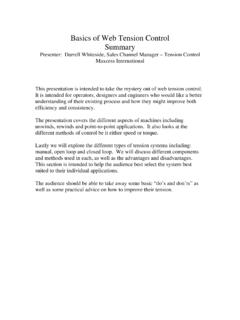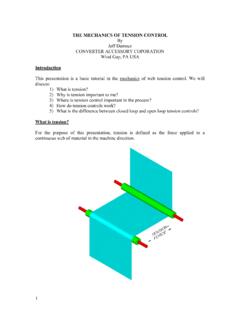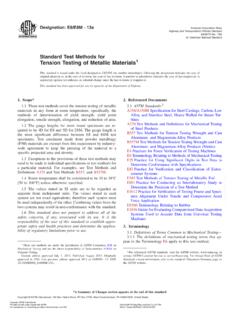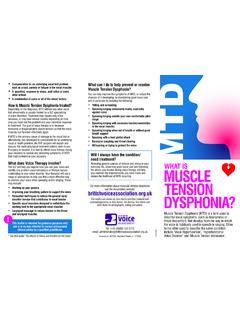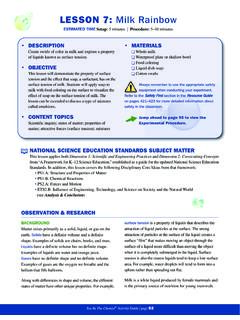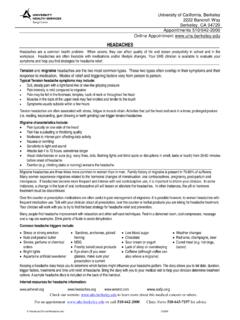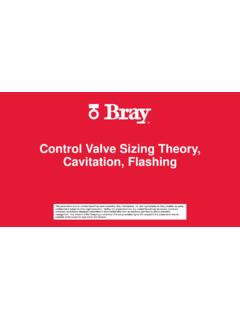Transcription of GATE CONTROL THEORY OF PAIN
1 GATE CONTROL THEORY OF PAIN According to the gate CONTROL THEORY of pain, pain signals that originate in an area of injury or disease do not travel directly or automatically to the brain. Rather, there exists within the spinal cord a gate mechanism that determines the degree to which pain signals are transmitted to the brain. When the gate is wide open, more pain signals get through than when it is closed. Generally, rather than being completely open or shut, the gate is open to varying degrees. Factors which: OPEN the pain gate CLOSE the pain gate Physical -Extent of the injury -Readiness of the nervous system to send pain signals -Inappropriate activity level -Application of heat or cold -Massage -Relaxation skills (to lower readiness of the nervous system)
2 -Appropriate activity level Emotional -Depression -Worry -Anxiety -Tension -Anger -Avoiding excessive emotions -Positive emotions -Managing stress Mental -Focusing on the pain -Boredom due to minimal involvement in life activities -Non-adaptive attitudes -Distraction away from pain -Increased social activities -Positive attitudes Behavioral -Withdrawal from positive life activities -Poor health habits -Increased positive life activities -Appropriate exercise -Healthy eating -Refraining from unhealthy habits










